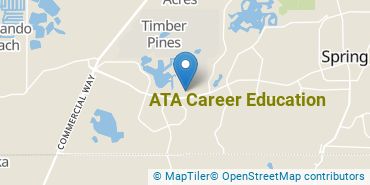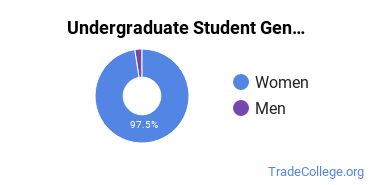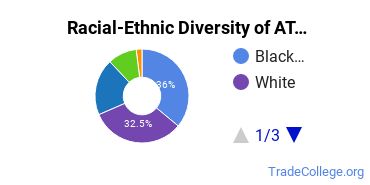ATA Career Education Trade Programs
ATA Career Education is a private for-profit institution situated in Spring Hill, Florida. Spring Hill is considered a suburb and offers tranquility and safety near the excitement of a city center.
Featured schools near , edit
Where Is ATA Career Education?

Contact details for ATA-CIF are given below.
| Contact Details | |
|---|---|
| Address: | 7351 Spring Hill Drive, Suite 11, Spring Hill, FL 34606 |
| Phone: | 352-684-3007 |
| Website: | www.atafl.edu |
Can I Afford ATA-CIF?
| In State | Out of State | |
|---|---|---|
| Tuition | $13,500 | $13,500 |
| Fees | $750 | $750 |
| Books and Supplies | $3,756 | $3,756 |
Student Loan Debt
Almost 66% of college students who graduated with the class of 2018 took out student loans, but that percentage varies from school to school. At ATA-CIF, approximately 93% of students took out student loans averaging $6,566 a year. That adds up to $26,264 over four years for those students.
ATA Career Education Undergraduate Student Diversity
Gender Diversity
Of the 230 full-time undergraduates at ATA-CIF, 5% are male and 95% are female.

Racial-Ethnic Diversity
The racial-ethnic breakdown of ATA Career Education students is as follows.

| Race/Ethnicity | Number of Grads |
|---|---|
| Asian | 4 |
| Black or African American | 84 |
| Hispanic or Latino | 28 |
| White | 73 |
| International Students | 0 |
| Other Races/Ethnicities | 41 |
ATA Career Education Trade School Concentrations
The table below shows the number of awards for each concentration.
| Major | Associate’s | Undergraduate Certificate | TOTAL |
|---|---|---|---|
| Other Practical Nursing, Vocational Nursing and Nursing Assistants | 0 | 60 | 60 |
| Dental Assisting/Assistant | 0 | 19 | 19 |
| Medical/Clinical Assistant | 2 | 13 | 15 |
| Radiologic Technology | 6 | 0 | 6 |
| Medical Insurance Coding Specialist/Coder | 1 | 2 | 3 |
| TOTAL | 9 | 94 | 103 |
References
*The racial-ethnic minorities count is calculated by taking the total number of students and subtracting white students, international students, and students whose race/ethnicity was unknown. This number is then divided by the total number of students at the school to obtain the racial-ethnic minorities percentage.
More about our data sources and methodologies.
Featured Schools
 Request Info
Request Info
|
Southern New Hampshire University You have goals. Southern New Hampshire University can help you get there. Whether you need a bachelor's degree to get into a career or want a master's degree to move up in your current career, SNHU has an online program for you. Find your degree from over 200 online programs. Learn More > |
